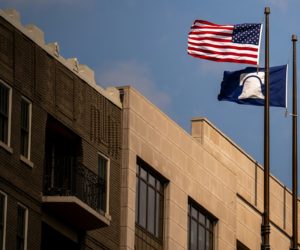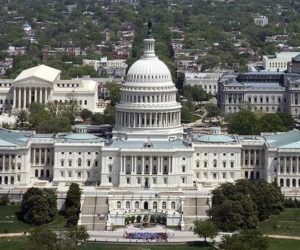Raw footage — photographs and video — of the tsunami and its aftermath, and an extensive list of online resources for those who want to follow earthquake-related news and information.
The New York Times has team coverage from reporters in Tokyo, Osaka, Hong Kong, Honolulu, Paris, Brussels, Moscow, New York, and Washington.
CNN: “Waves of debris flowed like lava across farmland, pushing boats, houses and trailers.”
Norimitsu Onishi in the New York Times: “Japan’s Strict Building Codes Saved Lives.”
The National Oceanic and Atmospheric Administration’s (NOAA) tsunami advisories for coastal areas from the California-Mexico border to British Columbia and Alaska.
Thousands of Japanese homes and businesses have lost power, and that could be a problem for Japan’s nuclear reactors:
Japanese authorities informed the International Atomic Energy Agency’s Incident and Emergency Center that they have ordered the evacuation of about 3,000 residents within a 1.9-mile radius of the Fukushima Daiichi nuclear power plant, and told people within a 16.2-mile radius to remain indoors, according to the IAEA Web site.
The cooling problem is with the second of six reactors at the plant, located on the east coast of Japan about 200 miles north of Tokyo and south of the heavily damaged town of Sendai. Separately there were reports of elevated radiation levels inside the control room of one of the other reactor units, which was built 40 years ago. Sources said that the authorities were contemplating venting from that unit.
Altogether, 11 Japanese nuclear reactors shut down automatically as they are designed to do in case of an earthquake.
“The multi-reactor Fukushima atomic power plant is now relying on battery power, which will only last around eight hours,” said Kevin Kamps, a specialist in nuclear waste at Beyond Nuclear, a group devoted to highlighting the perils of nuclear power. “The danger is the very thermally hot reactor cores at the plant must be continuously cooled for 24 to 48 hours. Without any electricity, the pumps won’t be able to pump water through the hot reactor cores to cool them.”
“There’s a basic cooling system that requires power, which they don’t have,” said Glenn McCullough, former chairman of the Tennessee Valley Authority who has been keeping track of the situation in Japan. He said that as a result of the tsunami, water had gotten into the diesel generators that would otherwise have provided backup power.
Scientific American has an article on “How to Cool a Nuclear Reactor.”
The Los Angeles Times reports that other countries in the Pacific Rim have not been as seriously affected by the tsunami as it was initially feared they might be.
Nevertheless, the area is not out of danger yet, and residents of low-lying islands and coastal areas are being evacuated (or warned to evacuate):
From the low-lying atolls of Kiribati to Hawaii‘s Waikiki beach, Chile‘s Easter Island and even inland areas such as California‘s Napa Valley, authorities on Friday scrambled to get their citizens out of harm’s way.
Low-lying islands that were the first in the tsunami’s path – Kiribati, Tonga, Guam – ordered people to move 30 metres inland and look for refuge well above sea level.
By the time the great wave roared past those islands, communities on the west coast of America were engaged in their own disaster preparations.
Authorities warned that even though the first waves brought less destruction than feared to Guam and other areas, the Pacific rim was not out of danger.
“Stay off the beach,” said US National Weather Service forecaster Diana Henderson. “It’s not just one wave, it’s a series that could last up to 12 hours.”
Larger than normal waves have indeed hit Hawaii and along the California coast, and several people were swept out to sea.
The Sacramento Bee has a slide show of tsunami-watchers and emergency response workers at various locations along the California coast.
PAST CONTRIBUTOR.
















